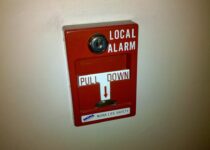What is a Fire Risk Assessment for Landlords London?
If you’re a landlord of a business premises or have a property that you are responsible for (for example a block of flats) then you’ll need to complete regular fire risk assessments.
A risk assessment is a careful look at your premises and the people who use them from a fire safety perspective, to identify potential risks and how you can improve your fire protection systems. It’s a legal requirement, and you could be fined if you don’t comply.
Identifying Fire Hazards
A fire risk assessment is a thorough examination of the fire hazards within a building, as well as the ways in which these risks can be controlled to prevent Fire Risk Assessment London. It should also examine the adequacy of fire precautions to ensure those who are present on the property at the time of a fire can escape safely.
Landlords are required to install a smoke alarm on every floor and a carbon monoxide detector in rooms where solid fuel appliances are used (such as coal fires). They must also make sure these are in working order at the start of each new tenancy.
Landlords should also consider how to keep their tenants safe from fire, including supplying them with the correct furniture and equipment. This is especially important in HMOs where there may be more occupants at risk.
Identifying People at Risk
If you are a landlord, freeholder or manager of a block of flats, it is a legal requirement to carry out a fire risk assessment. This is because it’s your responsibility to protect the people living and working in your building, ensuring that everyone can escape safely should a fire break out.
A fire risk assessment will also help identify if there are any vulnerable individuals who may be at increased risk of being affected by a fire in your property. This can include the elderly or those with physical disabilities or mental health issues that make them less able to react quickly to an alarm.
A fire risk assessment will identify the most effective ways of reducing and eliminating any risks. It will also help you understand your responsibilities and what steps to take to ensure that your premises are safe for all.
Creating an Emergency Plan
Emergency plans are a means of preventing emergencies, reducing or controlling the impact of emergencies and responding to an emergency. The process of creating these plans helps organisations understand how their routine services will be affected by an emergency, and allows them to plan accordingly.
The need for Housing Directors to prepare for larger scale emergencies where a large number of residents are rehoused at once was highlighted by the Grenfell Tower fire in 2017 and subsequent events since then. As well as providing immediate relief to those in need, boroughs must consider how to provide longer term temporary accommodation and help residents settle back into stable, permanent homes as soon as possible after an emergency.
There are many different Registered Providers of social housing, from large national landlords with over 100,000 homes across several local authority areas to small local providers with fewer than 1,000 homes. There is a need for regular Pan-London liaison between RPs and for improved relationships with boroughs.
Creating a Fire Safety Policy
Fires can cause a lot of damage to your property and put a huge financial burden on you. Additionally, they pose a serious risk to the health of your tenants.
Fortunately, you can avoid these consequences by following the right regulations and doing everything possible to make your property as fire safe as possible. This can help you protect your investment and ensure your tenants’ safety.
A fire safety policy is an important part of your legal obligations as a landlord and should be regularly updated to reflect any changes to the law. It should also include a clear evacuation plan and a list of fire safety procedures.
Landlords who take fire safety seriously are more likely to maintain a good reputation in the local community and attract new tenants. The law also makes it illegal for tenants to smoke in their rented properties, so banning smoking indoors can greatly reduce the risk of fires and improve fire safety in your home.
What is IMO code 3?
This is a question that many people might be asking themselves, especially those who are involved in the transportation industry. The International Maritime Organization (IMO) has established several codes to ensure the safety of vessels and their crews. IMO code 3 is one such code that deals with emergency preparedness and response.
IMO code 3 provides guidelines for ships to follow when dealing with emergencies at sea. These emergencies can range from natural disasters like hurricanes or tsunamis to man-made incidents like fires or collisions & Fire strategy plans. The code outlines specific procedures that should be followed in order to minimize damage and protect both the crew and the environment.
The implementation of IMO code 3 requires ships to have contingency plans in place, including identifying potential risks and hazards, developing emergency response procedures, training crew members on these procedures, and regularly reviewing and updating plans as necessary.


